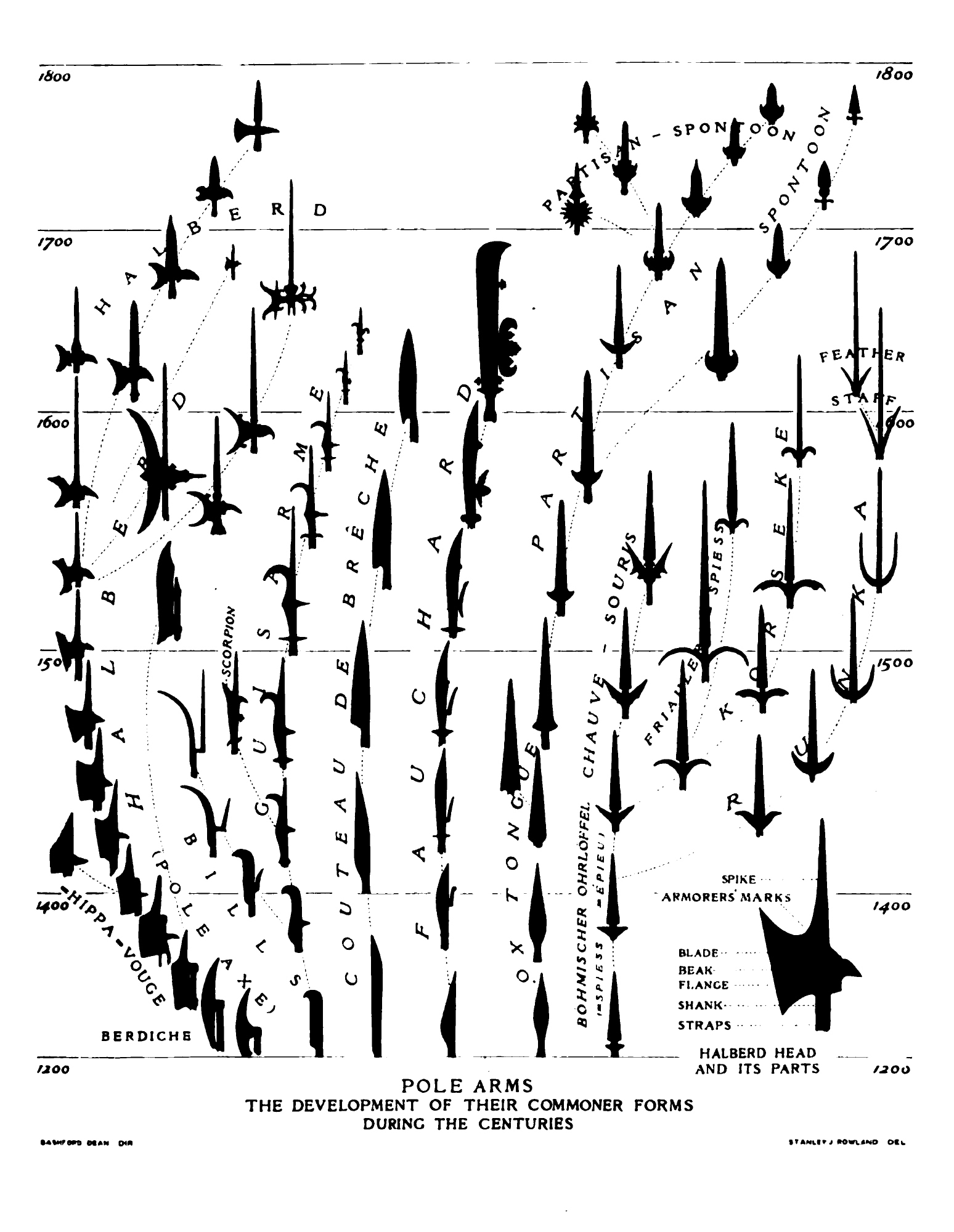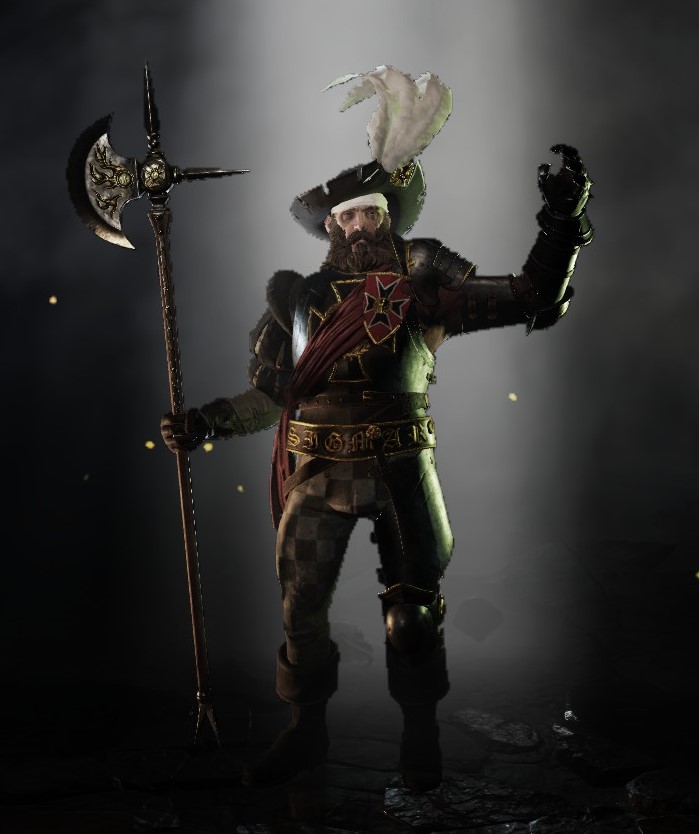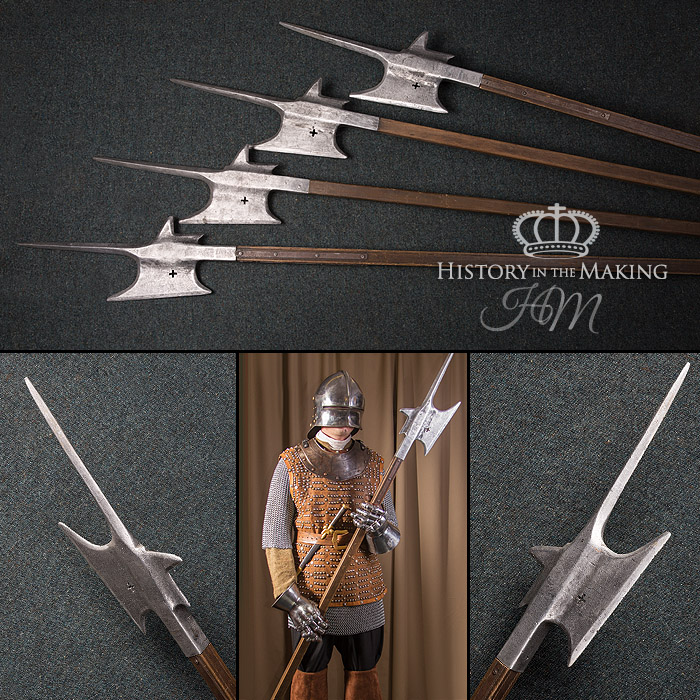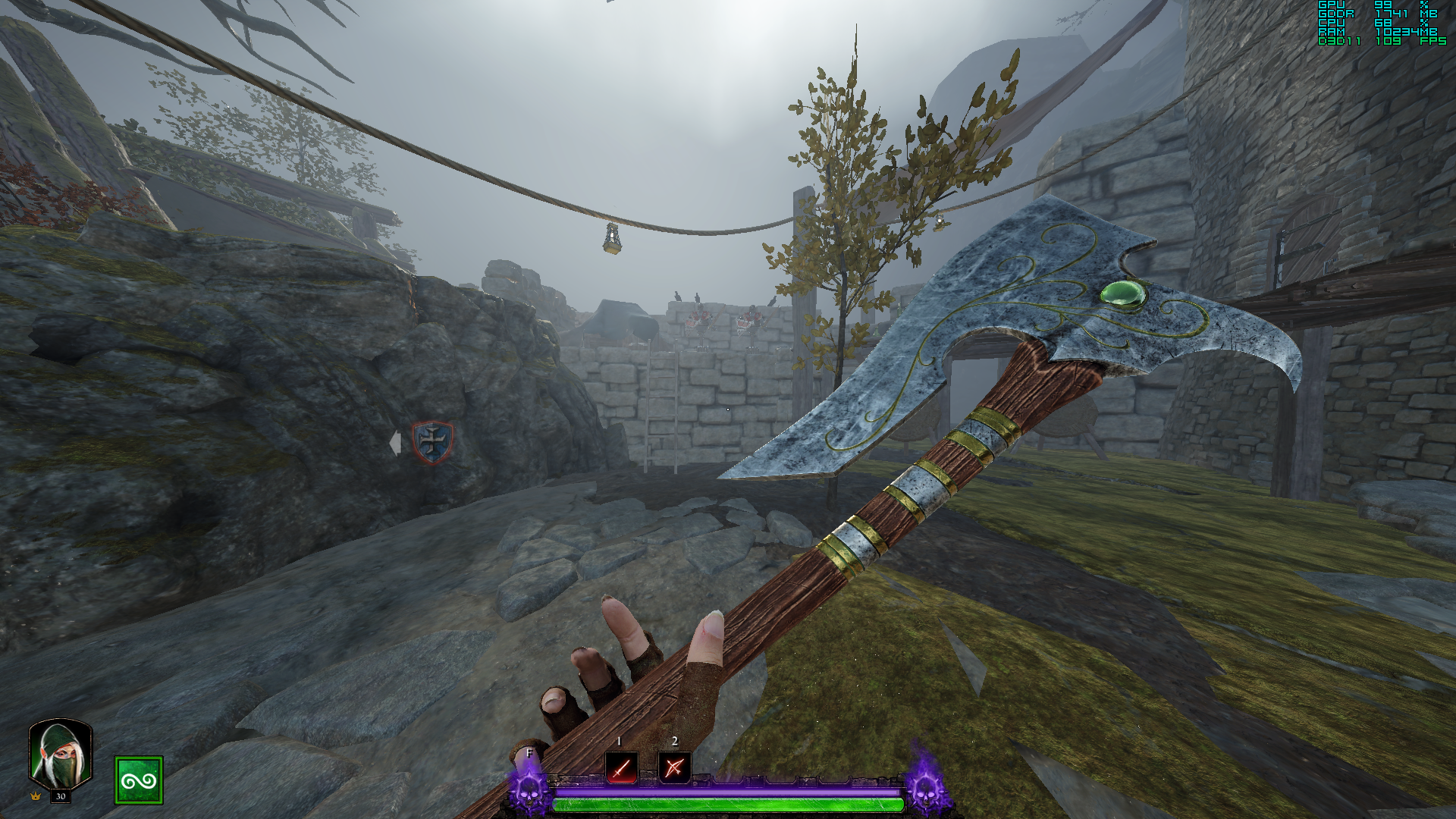I can’t figure out how should i call the weapon properly (or as close to the truth as possible) and it bothers me.
What our “halberd” is closer to: a poleaxe, or a halberd?
I googled “difference between halberd and poleaxe”, and from these discussions:
-
https://www.quora.com/What-is-the-difference-between-poleaxes-and-halberds
-
https://www.reddit.com/r/AskHistorians/comments/2u6f6z/whats_the_difference_between_poleaxes_and/
My mind was left more confused than before.
But first, pictures time!
Verm 2 ‘halberd’
Then, the examples of historical halberds!

^halberds are on the left side
Here we go for poleaxe examples!
https://myarmoury.com/images/features/pic_spot_poleaxe18.jpg
https://myarmoury.com/images/features/pic_spot_poleaxe14.jpg
https://myarmoury.com/images/features/pic_spot_poleaxe07.jpg
And more poleaxe examples here: https://myarmoury.com/feature_spot_poleaxe.html
Length:
From forum discussions i can gather that in general, poleaxes tend to be shorter than halberds, having length at human height or less. While Halberds are usually at human height or higher.
This point is moot here, as our ‘halberd’ is roughly the same length as Markus.
Weapon head construction:
Halberd heads seem to be predominantly mounted as a single, forged metal piece. While poleaxe heads are often (but not always) mounted from different parts. BTW poleaxe is considered a pretty variable weapon, and a hammer head you see in examples above can easily be a spike instead.
This point leans toward a poleaxe name for ingame weapon. Because ingame ‘halberd’ head doesn’t seem to be forged into 1 piece.
The axe head:
Halberd axe heads are very often a straight blade, a bit angled. Or a strange, concave shape. I’ve found very few examples of halberds with convex shape as seen ingame. Whereas with poleaxe, its much easier to find a convex shape that resembles ingame one.
This point leans toward a poleaxe name for ingame weapon.
Thrusting spike:
Halberds often have a long top spike (it is said that the spike became much longer in 16 century, than in 15 century). Sometimes they have a medium or short spike. This property really varies for both halberd and poleaxe. But poleaxes tend to be on shorter range, and ingame weapon has quite a moderate spike, so i’d say that it’s sliightly leans toward poleaxe name.
Back spike:
Halberds in most examples have really short spike angled down (sometimes straight). More of a hook perhaps? Nothing like the ingame back spike, which is straight and much more brutal. That kind of thing resembles more a poleaxe spike (if it has one).
This point leans toward a poleaxe name for ingame weapon.
As the last point, there was a post in myarmory forum, a historical comparison of “halberd” & “poleaxe” term usage in combat manuals (written at the same period, 15 and 16 century). And what i got from it, that terms poleaxe and halberd - were more tied to the time period and anti-armour requirements for that time, rather than about the weapon’s features.
For 15th century men at arms and knights, they needed a solid anti-armour punch, so the poleaxe (and polehammer) was used extensively as a term (with a lot of variaton of construction, ofc).
In 16th century the armor was waning, and so the focus shifted from anti-armour capability to other traits. Less wrestling, so the shafts (and spikes) could be longer. Much less hammer heads. More focus towards thrusting techniques than chopping. Printed manuals were available to more common audience. Halberds were used by mercs, commoners, against low-to-medium armored opponents.
And our ingame example looks like an effective anti-armour weapon in my opinion, that back-spike in particular, while top spike is short enough to not affect your chopping moves.
Thus, i think the ingame weapon is more of a poleaxe, than halberd. What do you think?

.jpg?version=1fbf89e1cfb63b1e24189b0e2b245095)
.jpg?version=effd059d03731dc0d104ec2ad816eeca)










